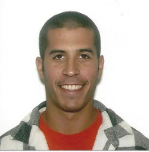Daniel Low is a medical student at the University of Washington, and a current Fogarty Scholar working at the Uganda Cancer Institute on access to care and complications of HIV and cancer co-morbidity. He has worked on projects in Malawi, Honduras, Tanzania, and Kenya.
With my current project stuck in administrative delays, I have developed two other side projects focused on enhancing palliative and hospice care at the Uganda Cancer Institute. The more I have borne witness to in-hospital deaths, the more I have wondered if these were “good” deaths, and if not, what would a “good” death look like in a Ugandan context?
Interestingly, Uganda has one of the most advanced palliative and hospice care programs in all of sub-Saharan Africa. Over 90 districts in the country have hospice offices offering in-home services, including oral morphine, something often severely lacking in end-of-life care in other parts of Africa. Furthermore, palliative care organizations have trained thousands of local healthcare providers, while palliative care practices are now taught in all medical schools in Uganda.
Nonetheless, there are usually at least 4-5 in-hospital deaths each week at the Uganda Cancer Institute (UCI). So the question remains, are these “good” deaths? Recent research in urban Uganda suggests probably not. Most people here, like in the States, would prefer to die at home. Pain management remains a problem, as do many other quality of life measures at the end of life.
Most of our patients present with late stage cancers, where a fix is often untenable; death is inevitable. In such a scenario, we are left in uncharted waters. We have been trained to prevent death, not to engage with it. It is a tricky crossroads, a place that many doctors, both here and in the States, don’t know how to comfortably navigate. It is also a place where spirituality tends to play a larger and larger role.
For some, this means thinking of the world to come, about reuniting with family in days of old. It’s about being closer to God. In the meantime, it may mean making amends and repenting. For others, this is just one step in a long line of reincarnation. This is only part of the cycle. Still others fear retribution, while some don’t think of anything beyond what is right in front of them, trying to instead focus on the moments that remain.
Regardless of the spiritual convocation, the end of life is a time of great meaning, fear and hope for many. In these moments I am reminded of Rabbi Abraham Joshua Heschel’s words, “just to be is a blessing. Just to live is holy.” Sometimes it takes confronting death to learn how much of a blessing it is to simply live. We learn to appreciate just how holy life is.
I think that’s how Shayna felt at the end of her all too brief life. When she sensed that the end was coming, she asked for all of the healthcare providers who had taken care of her to come near. She expressed her gratitude for everything that had been done for her. She talked about medications, friendly smiles from nurses, procedures to remove fluid from her pleural space so she could breathe better, words of encouragement from doctors, and general support. Then, as her breathing became labored and she knew this was it, she asked her family to sing her favorite hymn to her. Lost amidst the melodic song of her family, she peacefully died.
Shayna’s death was tough for me, as she was one of the few pediatric patients who spoke impeccable English and therefore was someone whom I had the pleasure of getting to know. She also happened to be the first pediatric patient I saw this trip. But hers was a “good” death.
I wonder how her end-of-life experience can become more regular. At only 14-years-old, how had she learned the blessing of just being? She was calm and at peace with the world, yet vibrant and alive all the while. She asked questions about her leukemia, and though sometimes fearful of the answers, she had genuine curiosity. She lived in amazement of life. To me, she lived what seemed to be a holy life. She modeled the approach that Heschel advocates for all of us: “Our goal should be to live life in radical amazement. To get up in the morning and look at the world in a way that takes nothing for granted. Everything is phenomenal; everything is incredible; never treat life casually. To be spiritual is to be amazed.”
Life is amazing. I see that awe when I walk to work, in the beauty of the acacia trees that line the road on the way to the hospital. I am amazed by the organized chaos of people walking to work, perhaps in a hurry but nonetheless always in a time and space to greet one another and offer a comforting smile. I feel that awe strolling the wards, seeing the human innovation of infusion treatments and radiotherapy. But most of all, I see that amazement in my patients, my colleagues and my friends. I feel that awe when Dr. Racheal stays at clinic until 8pm to take care of her patients, even though she is tired, hasn’t had a chance to eat lunch and has her own life to return to in the evening. I feel that holiness when I play peek-a-boo with Josiah, as he gaily waits in his undersized hospital bed for another round of chemotherapy.
That holiness is all around us; it merely is how we choose to view the world.

